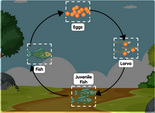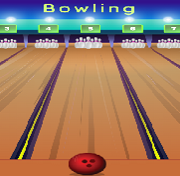Bird Beaks and Bird Feet Adaptations, Science Game
This game will teach children about the functions and differences of different feet and beaks of birds. Birds are very different. Their feet and beaks are the most noticeable difference. They have been adapted to perform specialized functions.
The Wonders of Avian Adaptation: Bird Beaks and Bird Feet
Birds, with their mesmerizing colors, graceful flight, and delightful songs, have always captivated our imagination. But have you ever wondered why birds have such diverse beaks and feet? It's all a matter of adaptation! Dive into the world of avian wonders and explore how bird beaks and bird feet have evolved over time. And once you've learned the basics, there's a thrilling interactive science game for kids waiting to reinforce this feathery knowledge!
The Tale of the Beak: More than Just a Mouth
Bird beaks aren't just for eating. Their varied shapes and sizes give us clues about a bird's diet, habitat, and even its behavior.
Eating Habits
A bird's beak is perfectly adapted to its diet. For instance, hummingbirds have long, needle-like beaks perfect for sipping nectar, while hawks sport sharp, curved beaks designed for tearing flesh.
Nest Building
The shape and strength of a bird's beak also play a role in nest construction. Birds like weavers have strong, conical beaks to tie and weave intricate nests, while woodpeckers have chisel-like beaks to peck holes into trees for their nests.
Communication and Mating
Birds like the toucan or hornbill have large, colorful beaks that play a role in attracting mates and establishing dominance.
Feet First: Adaptations for Every Terrain
Birds don't just fly; they perch, swim, walk, and even run. Their feet have evolved in fascinating ways to adapt to their various lifestyles.
Perching Birds
Most birds have a perching adaptation where three toes point forward and one backward, allowing them to grip onto branches securely.
Swimming Birds
Ducks and penguins have webbed feet, acting like flippers or paddles. This adaptation helps them propel through the water efficiently.
Wading Birds
Birds like herons and storks have long legs and toes, which enable them to wade in water without getting their bodies wet, perfect for hunting fish.
Climbing Birds
Woodpeckers and some parrots have zygodactyl feet, where two toes point forward and two backward, providing a strong grip for climbing tree trunks.
Challenge Time: Dive into the Interactive Game
Ready to test your knowledge on bird adaptations? The Bird Beaks and Bird Feet Adaptations Science Game offers a fun, engaging platform for kids to learn and challenge themselves. It's designed to reinforce understanding while ensuring the learning process remains a playful experience.
In Conclusion: Celebrating Avian Diversity
Birds are a testament to nature's creativity. Their beaks and feet are a direct reflection of the environments they inhabit and the lifestyles they lead. By understanding these adaptations, we gain a deeper appreciation of the intricate balance of nature. As we soar into the world of avian wonders, interactive platforms ensure the journey is both educational and enjoyable, helping young learners spread their wings of knowledge wide and high.
Read more
The feet and beak of a bird tell its story about its habitat, lifestyle and adaptations to it environment. The structural similarities of their feet and beaks is what most birds use to classify them. Some fish-eating birds, for example, have sharp edges on their beaks that allow them to grasp their catch. Some birds, such as the hummingbird have long, needle-like beaks which make it easier to consume nectar from flowers.
Birds' feet are crucial for navigation. The long claws or talons of birds like the bald head Eagle are used to catch prey. Different species also have different foot shapes depending on their habitat. Sparrows, wood ducks and mallard ducks all have special feet and beaks. A duck's webbed feet allow it to move in both water and swampy areas.
A bird's feet and beak can reveal a lot about its diet. While most birds catch their food with their beaks, some birds have very specific beaks. The beak of a sword-billed Hummingbird, for example, is longer than its rest.
The beaks of birds can tell us much about their lifestyle and habits. A duck's beak, for example, is flat and has two nostrils that filter water and trap food in it.
A fascinating aspect of bird anatomy are their feathers. For example, the feathers of owls are large and dense which allows them to fly silently through the air. Be aware of the woodpecker's beaks and their ability to smash barks.











